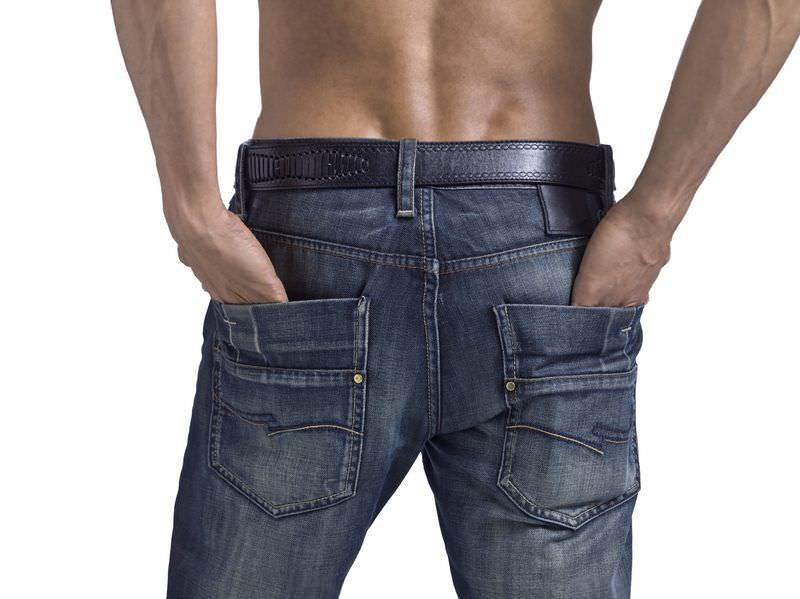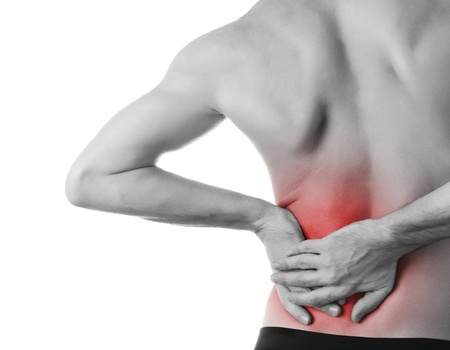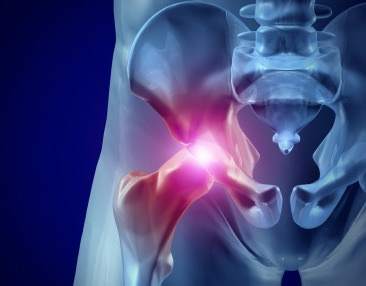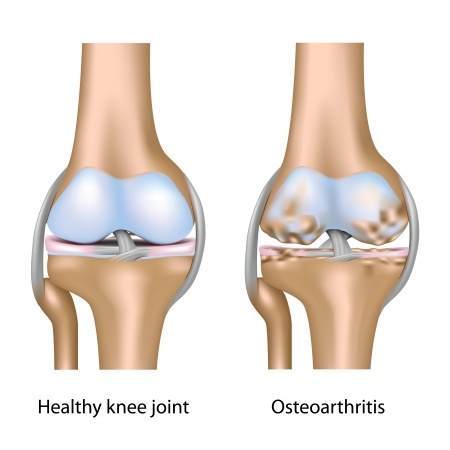Acute Low Back Pain: What Works, What Doesn’t & When to Worry

Is sudden acute low back pain stopping you in your tracks? This guide reveals the best ways to manage your pain, what to avoid, and the warning signs that mean you need to see a doctor fast.
Red Flags: When to Seek Urgent Medical Care
- Significant Trauma: Falls (especially in older adults) or severe accidents demand prompt evaluation.
- History of Cancer: Prior cancer with bone metastasis warrants medical consultation if new back pain presents.
- Suspected Spinal Infection: Back pain with fever requires investigation (though rare).
- Saddle Numbness: Numbness/pain in the inner thighs and buttocks needs attention.
- Loss of Bladder/Bowel Control: Incontinence signifies a potential medical emergency.
See Also: Sciatica: The Best Exercises For People With Sciatica
Beyond Emergencies: Managing Acute Low Back Pain
Most cases improve within 6 weeks, but some individuals experience lingering pain or recurrences. [1][2][3][4] Here’s what to know for immediate relief and faster recovery:
- Rest, But Not Too Much: A day or two of rest may help the initial inflammation. Prolonged bed rest, however, can worsen pain and stiffness.
- Gentle Movement: As soon as tolerable, incorporate light activities like walking. Movement increases blood flow for healing.
- Heat or Ice: Experiment with both to find what brings relief. Use ice for the first 48 hours for inflammation, then switch to heat to relax muscles.
- Over-the-counter relief: Consider ibuprofen or naproxen to reduce pain and inflammation. (Follow dosage instructions carefully.)
Don’t blindly trust an X-ray report
If your pain isn’t responding to treatment like it should get another look, even if the initial report is clear.
I was treating a gentleman who was involved in a car accident. His pain was naturally very acute. His X-ray REPORT showed nothing significant so I treated him but his acute low back pain got irritated with any appropriate treatment. This was not normal so I asked him to bring the X-rays next time and found there was a fracture in his last vertebra at L5. There was nothing about a fracture on the X-ray report.
A truck had rear-ended him with enough force to fracture L5. The lesson here is that you may not know you even had a fracture. Neither did his family doctor as his family doctor, like most doctors rely on X-ray reports to determine what is indicated on X-rays and MRIs.
Get A Second Opinion From Your Chiropractor
What should you do in this case? If you have sharp pains with lower back spasms after a car accident or trauma, it may be a sign of a fracture or just muscle spasms. Get a second opinion from your doctor or chiropractor.
Key Takeaway:
If you suspect an injury, even without a clear X-ray report, seeking a second opinion with your doctor or chiropractor is vital.

Medications for Acute Low Back Pain: What the Research Says
While some medications can bring relief from acute low back pain, it’s essential to understand the evidence and your options. Here’s a breakdown:
- Non-steroidal anti-inflammatories (NSAIDs): Research suggests NSAIDs like ibuprofen or naproxen may offer modest pain reduction for acute low back pain. [5]
- Opioids: Studies show limited benefits of opioids for acute low back pain relief and return to work time. [5][6] Consider discussing potential risks and alternatives with your doctor.
- Muscle Relaxants: Evidence for muscle relaxants is stronger, indicating moderate effectiveness in some cases. [7][8]
When Might Medications Be Helpful?
Consider discussing medication options with your doctor if severe pain disrupts your sleep. Adequate rest allows your body to heal naturally, making sleep vital for recovery. Always follow your doctor’s instructions carefully.
My Perspective: Instead of taking medication, I’ve successfully managed my low back pain through exercise, chiropractic care, and understanding the mechanics of my pain. However, everyone’s situation is unique.
Walking for Acute Low Back Pain: Benefits and Considerations
Research on walking specifically for acute low back pain shows it to be moderately helpful. [9] Here’s why it might be worth considering:
- Spinal Extension: Walking positions your spine in a gentle backward bend, counteracting the forward-bending postures that often aggravate back pain.
- Improved Circulation: Healthy blood flow nourishes tissues and supports healing.
- Alternative to Bed Rest: In most cases, staying active is preferable to prolonged bed rest for acute low back pain.
Bed Rest: When It’s Necessary, and When It’s Not
Prolonged bed rest can do more harm than good for acute low back pain. Here’s the breakdown:
- Limit to Two Days Max: Research indicates no benefits beyond a short rest period.
- When Agony Strikes: Bed rest is justified if unbearable pain accompanies every movement. Focus on finding your most comfortable position and using slow, deep breaths.
- The Importance of Movement: Even brief periods of crawling, standing, or switching positions help. Our bodies thrive on movement – prolonged stillness may worsen your back pain.
- Daily Stand-Up Goal: A determined effort to stand at least once a day keeps you progressing.
Heat Therapy: What Does the Science Say?
- Conflicting Evidence: Some studies find mild benefits from heat, while others find none. [10]
- My Recommendation: Heat (or ice) can be useful for temporary pain management. The psychological boost of “controlling” your pain, even briefly, aids in the healing process.
Ultrasound & Shockwave Therapy: Save Your Money
Studies show a clear lack of effectiveness for acute low back pain with these modalities. [11] Consider these costs not justified, as even temporary relief is unlikely.
TENS: Temporary Aid, Not a Cure
- TENS Explained: It stands for Transcutaneous Electrical Nerve Stimulation – basically, those small devices with electrode pads.
- Limited Effectiveness: It won’t fix acute low back pain but may offer brief relief while it’s applied.
- My Take: TENS is worth considering for those with acute low back pain and chronic, hard-to-manage pain as a less invasive alternative to some medications.
Exercise: Timing is Key For Acute Low Back Pain
- After the Acute Phase: In my experience, specific exercises are best once the worst pain has subsided. For chronic low back pain, the scientific evidence supports exercise. [12][13]
- Get Moving, but Gently: Before focusing on targeted exercises, prioritize gentle movement as soon as you can throughout the day to avoid stiffness.
- Trusted Resource: Herniated Disc Part 2: The Best Exercises For Your Herniated Disc features safe, effective low back exercises.
Sciatica: The Best Exercises For People With Sciatica
Disc Herniation Part 1: Best Self-Treatments To Help Your Disc Herniation
Tell us what you think in the comments below and like us on Facebook. This Toronto Downtown Chiropractor will answer all questions in the comments section.
References Part 1:
1. Carey TS, Garrett J, Jackman A, McLaughlin C, Fryer J, Smucker DR. The outcomes and costs of care for acute low back pain among patients seen by primary care practitioners, chiropractors, and orthopaedic surgeons. The North Carolina Back Pain Project. N Engl J Med. 1995;333(14):913–917.
2. Frymoyer JW. Back pain and sciatica. N Engl J Med. 1988;318(5):291–300.
3. Carey TS, Garrett JM, Jackman A, Hadler N. Recurrence and care seeking after acute back pain: results of a long-term follow-up study. North Carolina Back Pain Project. Med Care. 1999;37(2):157–164.
4. Stanton TR, Henschke N, Maher CG, Refshauge KM, Latimer J, McAuley JH. After an episode of acute lower back pain, recurrence is unpredictable and not as common as previously thought. Spine (Phila Pa 1976). 2008;33(26):2923–2928.
5. Roelofs PD, Deyo RA, Koes BW, Scholten RJ, van Tul-der MW. Non-steroidal anti-inflammatory drugs for low back pain. Cochrane Database Syst Rev. 2008;(1): CD000396.
References Part 2
6. Cifuentes M, Webster B, Genevay S, Pransky G. The course of opioid prescribing for a new episode of disabling low back pain: opioid features and dose escalation. Pain. 2010;151(1):22–29.
7 van Tulder MW, Touray T, Furlan AD, Solway S, Bouter LM. Muscle relaxants for non-specific low back pain. Cochrane Database Syst Rev. 2003;(2): CD004252.
8. Hoiriis KT, Pfleger B, McDuffie FC, et al. A randomized clinical trial comparing chiropractic adjustments to muscle relaxants for subacute low back pain. J Manipulative Physiol Ther. 2004;27(6):388–398.
9. Hendrick P, Te Wake AM, Tikkisetty AS, Wulff L, Yap C, Milosavljevic S (October 2010). “The effectiveness of walking as an intervention for low back pain: a systematic review”. Eur Spine J 19 (10): 1613–20. :10.1007/s00586-010-1412-z.PMC 2989236. PMID 20414688.
10. Spine (Phila Pa 1976). 2006 Apr 20;31(9):998-1006. A Cochrane review of superficial heat or cold for low back pain.
11. Seco J, Kovacs FM, Urrutia G (October 2011). “The efficacy, safety, effectiveness, and cost-effectiveness of ultrasound and shock wave therapies for low back pain: a systematic review”. Spine J 11 (10): 966–77. doi:10.1016/j.spinee.2011.02.002.PMID 21482199
12. Hides JA, Jull GA, Richardson CA. Long-term effects of specific stabilizing exercises for first-episode low back pain. Spine (Phila Pa 1976). 2001;26(11):E243–E248.
13. Guild DG (September 2012). “Mechanical therapy for low back pain”. Prim. Care 39 (3): 511–6. doi:10.1016/j.pop.2012.06.006.PMID 22958560.









This is such a holorious techniques or method which you give us. Its such a great article.